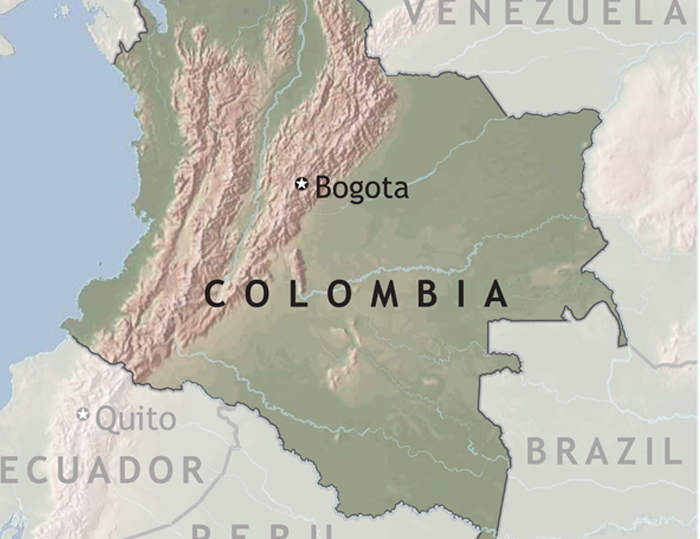- What We Do
- Agriculture and Food Security
- Democracy, Human Rights and Governance
- Economic Growth and Trade
- Education
- Ending Extreme Poverty
- Environment and Global Climate Change
- Gender Equality and Women's Empowerment
- Global Health
- Water and Sanitation
- Working in Crises and Conflict
- Disaster Assistance
- Political Transition Initiatives
- Conflict Mitigation and Prevention
- Countering Violent Extremism
- Disaster Risk Reduction
- Peacebuilding and Reconciliation
- Providing Safe & Secure Environments for Development
- Recovering From Crisis
- Resilience
- Tech Challenge for Atrocity Prevention
- World Humanitarian Day
- U.S. Global Development Lab

Enhancing Colombian ability to implement rapid response during the critical 36 months following signature of peace accords.
WHY USAID/OTI IS IN COLOMBIA
Colombia has experienced an intractable armed conflict against insurgency groups for over 50 years. At the conflict’s core are state weakness and structural inequities that result in two Colombias: a modern, urban Colombia and a poor, neglected rural Colombia where most of the conflict has taken place.
After four years of negotiations, on Nov. 30, 2016, the Colombian government (GOC) ratified a final peace accord with the largest guerrilla insurgency group, the Revolutionary Armed Forces of Colombia (FARC). Consequently the FARC is demobilizing and the GOC has begun to enact wide-ranging reforms related to rural development, inclusive political participation, transitional justice and reduction of illicit crops, like coca. It will take over a decade to implement the full accord. USAID/OTI is in Colombia to help the GOC jump-start implementation.
USAID/OTI’S ROLE IN COLOMBIA
The USAID/OTI program, Colombia Transforma, is part of the U.S. Government’s effort to support a sustainable and inclusive Colombian peace. Launched in 2015 as peace negotiations accelerated, USAID/OTI helps the GOC with rapid response implementation of the accord during the critical first three years so that Colombians begin to experience immediate changes brought by peace, particularly those most affected by the conflict.
PROGRAM HIGHLIGHTS
USAID/OTI partners with national and local government and civil society actors in three departments with limited state presence: Arauca, Norte de Santander and Putumayo. The scale of change needed to implement peace requires an integrated effort that bridges the historic gap between Bogota and conflict zones.
-
Colombia’s municipal governments are at the forefront of peace implementation. With USAID/OTI support, 68 percent of municipalities in Arauca, Norte de Santander and Putumayo are aligning municipal plans with accord priorities and coordinating with national government institutions responsible for implementing the accords.
-
Grassroots community action boards (JACs) represent the most fundamental level of citizen participation in governance. Empowering these organizations ensures peace implementation reflects local realities and priorities. USAID/OTI trained more than 2,600 members of 117 JACs to comprehend how the peace accord affects them and to manage community resources.
-
USAID/OTI partnered with the GOC to pilot mobile peace and justice fairs connecting at least 5,800 Colombians to social programs, increasing the national government’s visibility in conflict-affected communities.
-
USAID/OTI sponsored mentorship exchanges for 600 community leaders from 119 municipalities across the country to share best practices on how to implement projects, in the spirit of the accord, that were already proved relevant and successful in other regions of Colombia,
- USAID/OTI facilitated 30 GOC interagency roundtables that allowed the GOC to produce the framework plan for implementing the accord.







Comment
Make a general inquiry or suggest an improvement.